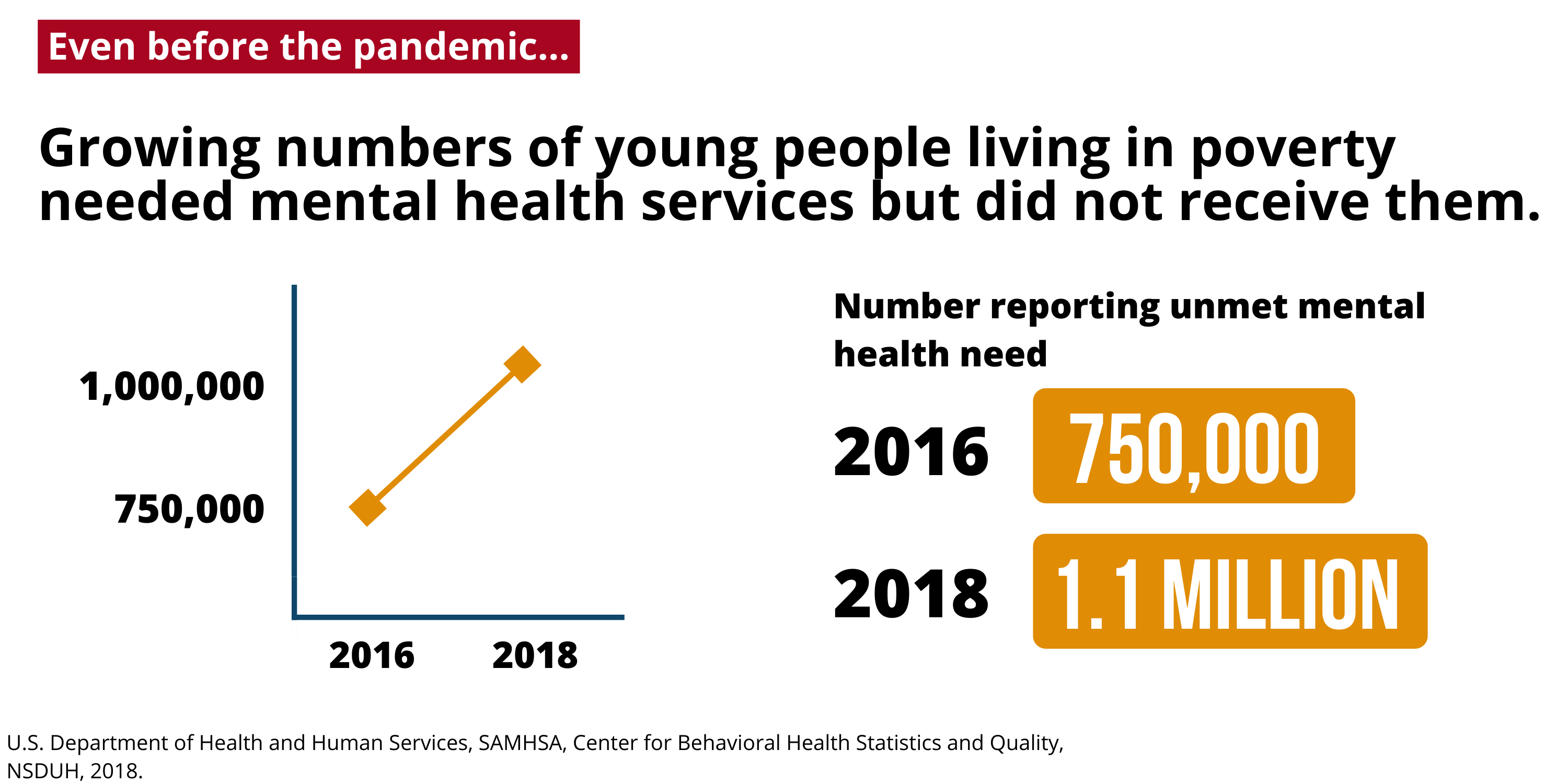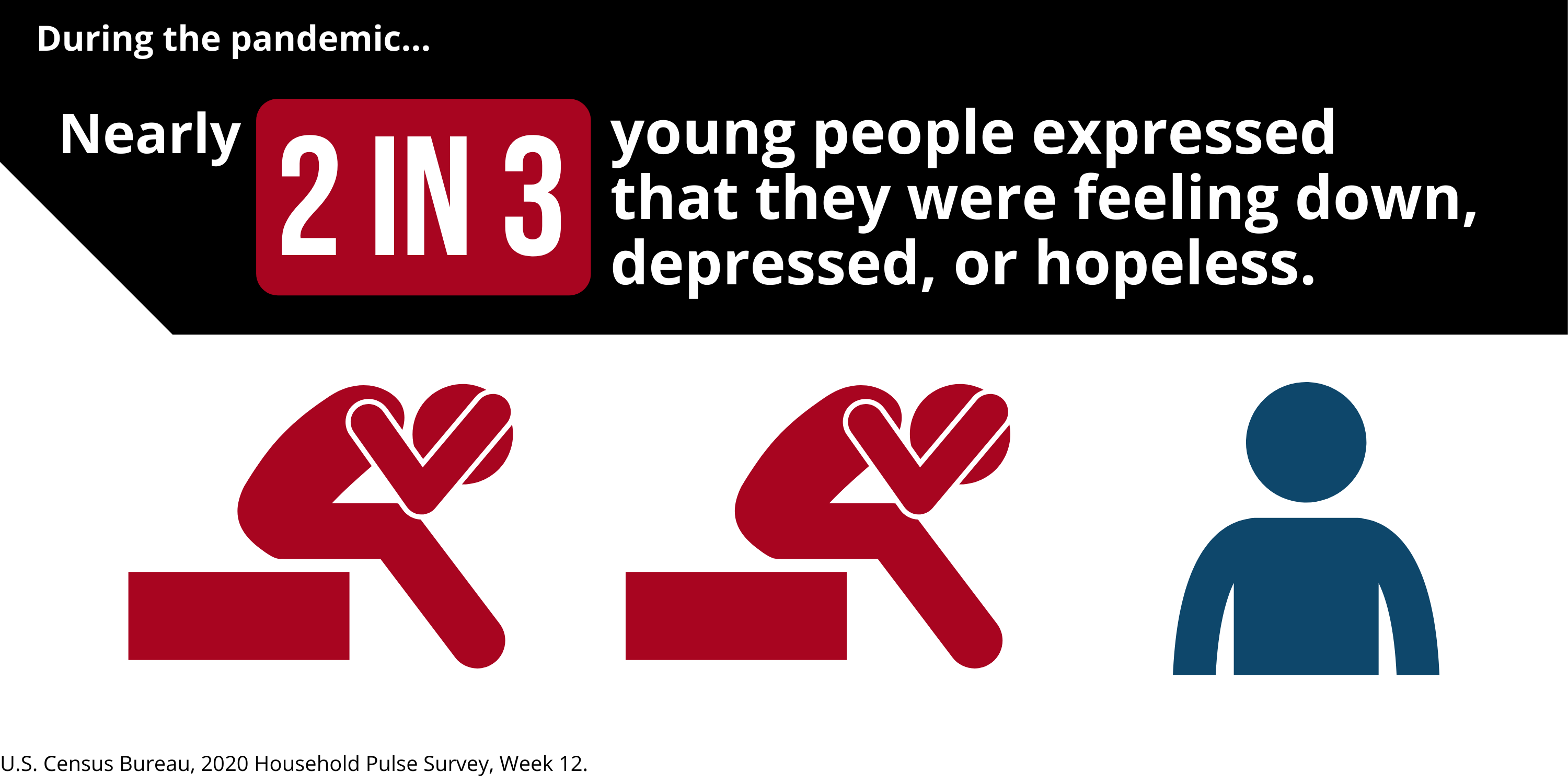Prioritize Young People’s Mental Health with $7.5 Billion Investment
Updated August 2021
The Coronavirus pandemic has taken a steep toll on young people’s mental health and wellness. Although the almost $4 billion investment in mental health through the American Rescue Plan Act is a critical investment, it falls dramatically short in the context of a once in-a-century cultural trauma[1] and the associated mental health concerns that the entire country has experienced.
Mental health resources that aren’t intentionally designed to reach youth and young adults won’t reach them.[2] Currently, no SAMHSA, HRSA, or CMS programmatic funding is specifically dedicated to the wellbeing of youth and young adults. We urge the Senate Finance and HELP Committees to prioritize young people’s healing and well-being. This can be done by making a targeted $7.5 billion investment in the mental health of youth ages 16-25 as part of a comprehensive health equity (maternal, behavioral, and racial justice health) investment in the Budget Reconciliation package.

In 2018, more than 1.1 million young people reported that they needed mental health support but couldn’t get it. That represented 20 percent of all young adults ages 18-25 living in poverty.
In 2018, the cost would have been $2.5 billion to address this unmet need and provide services to these 1.1 million young people at an estimated $2,197/youth[3].
During the pandemic, 2 in 3 young people report feeling down, depressed, or hopeless. That’s a 200 percent increase since 2018.

3x the Need Demands 3x the Investment
To meet this crisis, we are calling for a targeted investment in the mental health of youth and young adults of $7.5 billion to the Substance Abuse and Mental Health Services Administration (SAMHSA), the Health Resources and Services Administration (HRSA), and the Centers for Medicare and Medicaid Services (CMS)—in addition to what was allocated to SAMHSA and HRSA. This investment is commensurate with the dramatic increase in need and should support:
An increase towards 100% FMAP in Medicaid for transition age youth behavioral health services, including:
- Youth mobile crisis response services;[4]
- Youth peer support;[5]
- App- and text-based telehealth;[6]
Setting 15% of funding aside for transition age youth across all SAMHSA programs, including:
- Increased capacity to support mental health in youth-serving community-based organizations through NNED;[7]
- Culturally responsive Adverse Childhood Experiences (ACEs) screening and trauma responsive care;[8] and
- Restoring the Healthy Transitions Initiative to its original purpose and funding level[9]
Tripled investment in HRSA’s Behavioral Health Workforce Education and Training Program (BWHET) to support:
- Growing the behavioral health workforce pipeline, with a specific focus on peer support specialists, recovery specialists, BIPOC clinicians (including those who speak languages that help limited English proficient populations and those that work in Tribal Nations/Urban Indian Health facilities), and providers in Health Professional Shortage Areas (HPSAs). Strategic prioritization for funding should be done in partnership with the Indian Health Service, Federally Qualified Health Centers, and community based organizations.
Responding to the surging mental health crisis is essential for a just and comprehensive pandemic recovery. The pandemic has exacerbated our nation’s past failure to invest in safe communities; adequately address social, environmental, and economic justice and opportunity; and equitably meet the mental health needs of youth and young adults. As a result, young people have triple the level of need. We can only successfully resolve the health and economic crisis we face if young people’s mental health needs cease to outpace our investments.
Sources:
1. https://www.clasp.org/publications/report/brief/behindasterisk
2. https://www.clasp.org/sites/default/files/ND4Y_Economic%20Justice7.png
3. https://www.ncbi.nlm.nih.gov/pmc/articles/PMC7202946/
4. https://store.samhsa.gov/product/Crisis-Services-Effectiveness-Cost-Effe…
5. https://www.umassmed.edu/TransitionsACR/
6. https://www.clasp.org/publications/fact-sheet/text-based-mental-health-m…
7. https://ethndis.org/edonline/index.php/ethndis/article/view/705/890
8. https://www.clasp.org/publications/report/brief/core-principles-reframe-…
9. https://www.cmhnetwork.org/news/healthy-transitions-initiative-now-you-s…